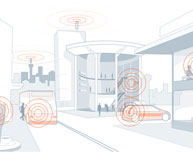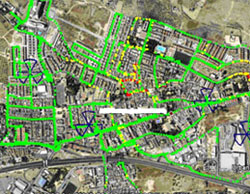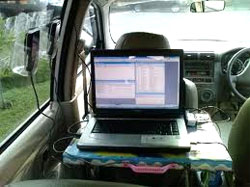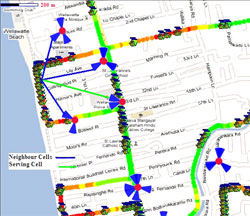Network Planning & Optimization
Network Planning and Optimization
Turn key MW planning
After the MW site survey is carried out, the outcome will give a clear status of the terrain through which the MWlink is expected to be established and the Line Of Site (LOS) with all other obstructions.Whether your link is point-to-point or point-to-multipoint, the first thing to do is to verify that it will have not only clear the line of sight, but will clear at least 60 percent of the first Fresnel zone obstructions as well.
The following activities will be carried out under this,
Traffic planning
Link planning according to the given availability (Grade of Service)
LOS and link budget calculation using Path loss
Physical LOS survey on requirement
Survey and Transmission Planning
MW survey is carried out to have MW connectivity between the two sites to ascertain the Line of Sight clearance. The MW LOS survey is carried out physically, checking the terrain between the hop & selected sites for acquisition.Before building indoor and outdoor equipment, we recommend to do the survey to identify current situation of the site. Doing a site survey before making a proposal gives the customer a better idea of the expected costs and the anticipated results.
Site Survey (Indoor/Outdoor)
- Tower and shelter space availability
- Power availability
- Access Road availability
- Tower and shelter drawing by using Auto CAD
LOS Survey (MW)
- MW LOS survey is carried out physically checking the terrain between the two sites
Tools used
- Path Loss tool/s
- GPS
- Binocular
- Inclinometer
ATSL offers a magnitude of specialized services to operators and the following are the most sought-after services
Asset recording and Management
 As the networks grow in size and complexity, the resources deployed at numerous sites need to be tracked and verified. Further, this service compliments site record updating processes wherein detailed information of the site is recorded and stored where necessary.
As the networks grow in size and complexity, the resources deployed at numerous sites need to be tracked and verified. Further, this service compliments site record updating processes wherein detailed information of the site is recorded and stored where necessary.
Drive test (Outdoor and in building)
Drive test information is used to aid in finding specific problems during the rollout phases of new networks or to observe specific problems reported by consumers during the operational phase of the network
- Usually carried out for new sites in the network
- New cells to come on air are thoroughly drive tested to determine their server and coverage areas
- Drive test routes to include all the major roads, important locations and hotspots
Data collected During DT

- Signal intensity
- Signal quality
- Interference
- Dropped calls
- Blocked calls
- Anomalous events
- Call statistics
- Service level statistics
- Handover information
- Neighbouring cell information
- GPS position
Benchmarking
Optimization
Optimization is carried out in the network to minimize the call drops and RF interference in the network, to increase the indoor & outdoor coverage & better speech quality. The following activities will follow;
- Check BSS parameters to meet RF objectives
- Change the orientation & tilt of the antennas
- Height reduction of antennas
- Installation of TMA wherever required
- Add additional cell sites if required
- Implement Indoor solutions for Indoor coverage
Main Parameters and events

- Rx Level
- Rx Quality
- SQI ( Speech Quality Identification)
- Rx Power
- Tx Power
- TA (Timing Advance)
3G
- Ranked CPICH RSCP
- Ranked Ec/Io
- SQI
- Rx Power
- Tx Power
Events
- Hand over (2G <–>3G)
- Soft Hand over (3G <–> 3G)
- Hand over failures
- Drop calls
Drive test Reports
- Routine Drive test reports (Cluster wise)
- Problematic Drive test reports (Site wise)
- Bench marking reports
- Indoor testing reports



